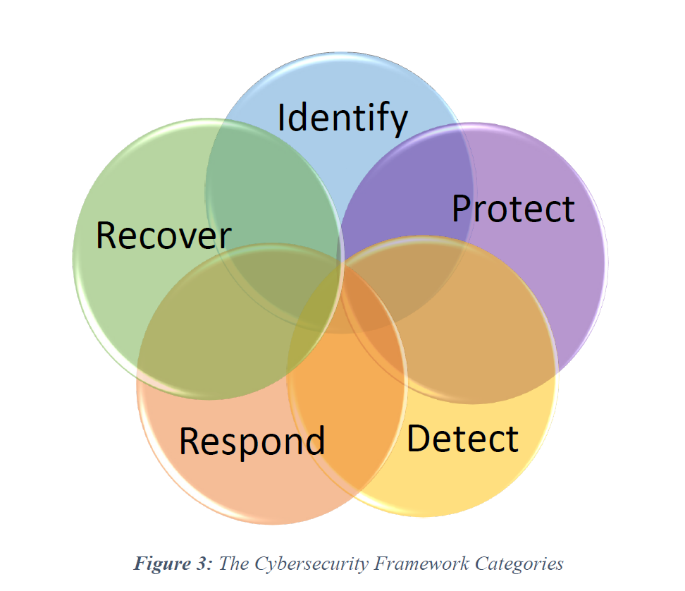The National Institute of Standards and Technology (NIST) has released a framework to provide companies and public sector organizations to reduce the risk of cyberattacks. Although it is voluntary guidance, the standards, guidelines, and practices that it provides are a valuable resource that is being adopted by organizations around the world.
In this article, we outline the benefits the NIST guidelines provide in terms of risk reduction and satisfying compliance requirements for your business. We also explain how organizations can effectively address the NIST regulations, and how Sole Creation can assist in this process.
The Benefits of Adopting the NIST Framework for Your Organization
The NIST Framework is a series of standards, guidelines, practices, and resources designed fundamentally to help organizations reduce the risk of cybersecurity attacks on their operations. They have also been designed to encourage and facilitate greater levels of awareness, collaboration, and communication of cyber risks across different stakeholders inside and outside of an organization.
Given how damaging a cyber attack can be both in reputational terms and in pure financial loss, strong preparations to pre-emptively prevent attacks from happening are becoming increasingly essential. This requirement is made even more acute by the fact that the approaches being deployed by cybercriminals to find and exploit loopholes in defenses are more and more sophisticated.
The framework also helps to ascertain the most fundamental activities to a firm or public sector department running. This understanding means that most core operations and service delivery functions are prioritized for cyber protection to focus investments on cybersecurity tools and services.
From a regulatory compliance perspective, implementation of the NIST Framework recommendations can also be extremely useful. This is not only the case for ensuring compliance with US federal and state regulations but also assists US firms that are working with customers in the European Union and are therefore subject to General Data Protection Regulation (GDPR) obligations.
That said, the NIST framework is specifically written in a way that is agnostic to particular regulatory frameworks. This is to enable organizations to adapt and modify it to their particular requirements, and to incorporate new and industry-specific regulations as they come into force.
What Does the Framework Cover?
The NIST Framework guidelines help organizations to understand the cyber risks landscape. With this knowledge basis, the idea is that they are then better placed to put into place an effective cybersecurity strategy.
The framework also helps to establish a common language across an organization and with its external parties such as partners and contractors. This aspect encompasses cybersecurity precautions and communications, user awareness, and cross-functional collaboration between IT departments, business, and planning staff, and different operating divisions.
It also ensures that senior leadership is bought into and involved in the program for maximum effectiveness. This helps to create greater levels of buy-in across the organization and ensures that appropriate prioritization and budgeting takes place to ramp up cybersecurity initiatives.
Implementing the NIST Guidelines in Your Organization
Because of the focus, effort, and financial commitment involved in adopting a robust and comprehensive approach to cybersecurity, the first job is to convince the entire senior management team that the measures are worthwhile and beneficial across the business.
C-level executives such as Data Privacy Officers (DPOs), Chief Information Security Officers (CISOs), and Chief Information Officers (CIOs) are likely to already be on board with the program, if not the instigators of it.
But obtaining executive support from across the c-suite is not always as straightforward. At the CEO, Chief Operating Officer (COO), and Chief Financial Officer (CFO) level, the return on investment can be a little more difficult to get across. Even with the changes in the regulatory landscape of data privacy and cybersecurity, support from across the board is not always forthcoming for supporting wide-ranging cybersecurity initiatives that until recently used to be mainly siloed as an “IT issue”.
How Sole Creation Helps Implement the NIST Framework
The NIST Framework is designed to be flexible so that businesses and organizations can select the appropriate levels of goals and activities according to the regulations that they are subject to.
The NIST Framework is divided into a Privacy Framework and a Cybersecurity Framework. Both parts are similar, and the two sets of guidelines are designed to work in harmony with one another. The Framework as a whole aim to be a guidebook on implementing privacy and cybersecurity management. This helps to ensure customer confidence and regulatory compliance.
Sole Creation work with our customers to understand their needs and help with strategic discussions. This is achieved by following the NIST 5-step guidelines and evaluating implementation and deployment across our customers’ organizations.
At the identification stage, activities can include asset inventory and management, assessment of the business environment, governance, risk assessment, and the implementation and execution of a risk management strategy.
For protecting organizations, Sole Creation works with and is an expert in a number of carefully qualified vendor technologies that solve issues of access control, data security, information protection process and procedures, and protective technology. These solutions also involve awareness and training initiatives that ensure effective rollout at all levels of an organization.
Detection involves monitoring anomalies and events, continuous security monitoring, and rigorous detection processes, whereas the response is centered on response planning, efficient communications, analysis, mitigation, and continuous improvement evaluations.
The ultimate goal for organizations implementing the NIST Framework guidelines is that attacks are prevented in the first place. But in the event they do occur, the recovery stage ensures that detailed plans are in place for recovery planning, improvements, and internal and external communications.
A Layered Approach to Cybersecurity
Sole Creation takes a multi-faceted approach to help our clients adopt the NIST guidelines. This total protection package includes:
Enterprise-Class Coverage
Combining multiple layers of protection ensures customers are properly protected from external threats.
Proactive Approach
This is comprised of advanced technologies that can detect and deploy the latest protection protocols and let our Network Operations Center track potential issues before they happen.
Communication and Reporting
A wide range of reports is provided to ensure the right stakeholders have visibility into the security being provided.
Fully Security Monitoring
Sole Creation monitors your entire environment to ensure it remains healthy and protected and is well placed to act immediately if there is an issue.
Scans Outbound Emails
Avoid fines and IP blacklisting with our Enterprise solution that provides an additional layer of protection on your outbound mail service.
Get Started Today
Book a FREE consultation with Sole Creation’s expert team today Click Here
References










